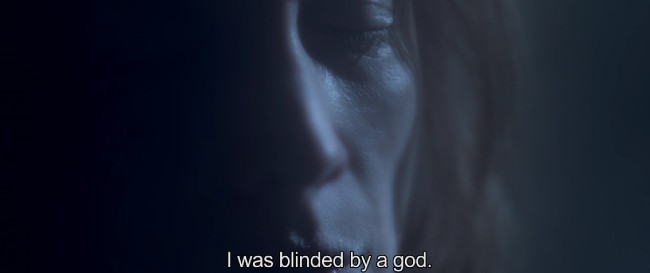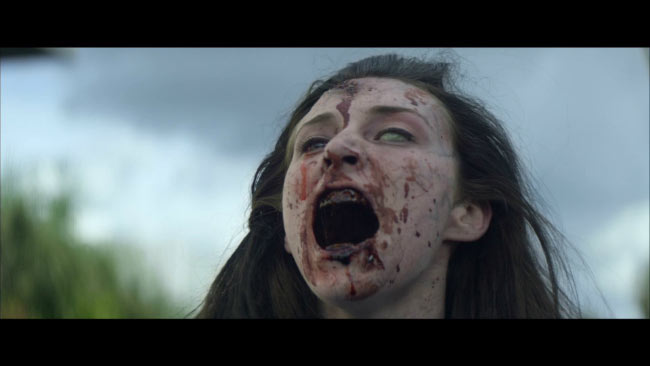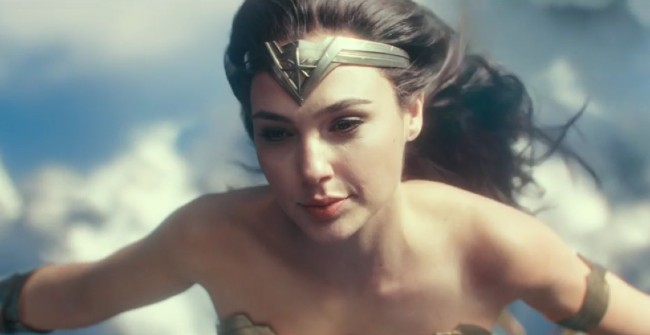My Two Doctor Stranges
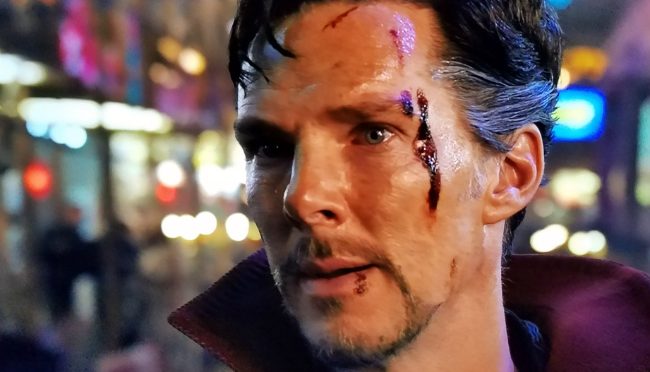
Doctor Strange has been out of the theaters for months, but Marvel Universe’s recent entry in an ever growing cash grab universe has finally hit Netflix. So, for you, me, and the thousands of other people who didn’t see the movie in the theater we can now enjoy it in the comfort of our own homes. But is it worth the stream?

Here’s quick recap of Doctor Strange’s first act: Strange reminds us that he’s the best doctor ever. Ever. To drive home the point, we get to see him save two lives in one day (Two! Two! Two for the price of one). Director Scott Derrickson (Sinister) inserts a lot of shots of Strange’s multiple awards and very fancy, expensive watch collection (on rotating displays for added douche bag effect).
To further prove Strange is arrogant and self-involved, Derrickson relies on the age old successful-rich-person-driving-their-million-dollar-sports-car-with-abandoned cliche. Of course, the results are exactly what you would expect. Crash. Boom. Bang, right over a cliff. Don’t forget the last close up of his hands as the car is tumbling down the cliff on its way to a watery grave.

From here until the end of the first act it’s close ups of Strange’s hands, close ups of his hands shaking, and close ups of all the scars on his hands. It’s all hands because we have to be reminded more than once a doctor is nothing without their hands (Which is a lot like saying a physicist is nothing without their rocket ships to space. Wait, no. You can be a physicist without ever stepping foot on a rocket, but I digress).
To put in a nail in the first act, we see Strange lash out at the only person to have ever cared for him. It’s a cliche used just as much as the cliche of the person who lashes out apologizing later in the movie after realizing their mistake. We get that cliche in the second act.
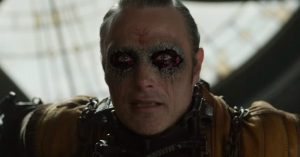
The first act of any movie, whether Marvel Universe of a Best Picture winner, should set the stage for the next two acts. By the end of the first act, with the exception of movies where there will be a twist, the viewer should have some idea of what will be coming in the last two acts. At the very least, the viewer should be interested in what is happening on the screen. Doctor Strange doesn’t get remotely interesting until Mads Mikkelsen’s Kaecilius enters the movie.
Here’s a quick recap of the second act: We learn the Obi-Wan…I mean the Ancient One…had a promising student who was lured to the the Dark Side by the Emperor…I mean Dormammu (rhymes with Shamu, folks). Kaecilius takes a lot of the Ancient One’s other students with him to the Dark Side and they all plan to become immortal and rule our world with Dormammu. Fun times for planet earth.
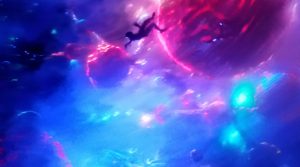
The second act is where we also see, limited as it is, Strange’s training to become a magic man. It’s quick and fast and by the end, after reading a few books, Strange is almost a master of the magical arts. Even The Karate Kid had a better training, learning, fighting the teacher sequence before becoming a martial arts master. We don’t get a “wax on, wax off” moment in Doctor Strange. The movie assumes the viewer will accept the fact that after reading a few books and someone saying he’s a “natural” Strange is a master magician.
The second act also subjects the viewer to the cliche of the main character not being able to accept fantastic events even though they have experienced fantastic events. Strange has no problem accepting the fact that he was forced out of his body as an astral projection, traveled the cosmos, and fought a guy who could create weapons from magic. But tell him he has to fight a world eating demon planning on turning the earth into a cinder and he gets very doubtful about what’s going on.
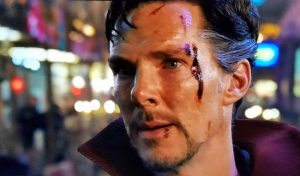
Finally, The third act is typical superhero destruction-explosions, mass casualties, buildings falling. Of course, the good guys win, the bad guys lose, and one of the good guys (Chiwetel Ejiofor’s Mordo) leaves Team Strange to go Winter Soldier in the sequel.
In the ever growing line of comic book movies, Doctor Strange isn’t a bad movie. It’s predictable, hits all the comic book movie benchmarks, and most of the times it’s boring. The first two are forgivable sins, but boring can never be forgiven.
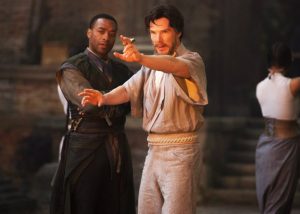
If there’s a positive side to the movie it’s very bright and very colorful. From Kaecilius’s purple possessed eyes to the Ghostbusters’s Zuul like destruction of Hong Kong to the final battle between Strange and Dormammu there isn’t a dark moment in the movie. Perhaps, it’s a response to how dark comic book movies have become since Christopher Nolan’s Batman Begins reshaped the tone of the superhero movies. Who knew man’s destruction by a super demon would be so cheerful looking?
Doctor Strange’s movie palette isn’t the only thing that’s bright in the movie. Derrickson has packed more attempts at comedy in Doctor Strange than any other Marvel movie to date. Yes, including Ant-Man. “Attempts” is the key word. None of it comes off as funny. Humorous at best, but not funny. The scene with the cape pulling Strange in one direction as he tries to go in another direction lasts a minute longer than needed.

Overall, Doctor Strange is one of the weaker entries in the ever expanding Marvel Cinematic Universe. How do you know it’s a weak movie? One word- time travel. Okay, that’s two words. It’s a cop out of a plot device. Time travel in a movie or story that otherwise is not a movie about time travel is a plot device weak writers will use when they’ve written themselves into a corner. Think about NBC’s Heroes. Every time the gang was in a bind Hiro would reset everything with a little time jump.
Time travel wasn’t enough to end the movie. Derrickson and the other screenwriters borrowed the plot device from Groundhog Day. Yes, it took Harold Ramis and Bill Murray to save Doctor Strange so he could save the Marvel Universe. (If you haven’t seen Doctor Strange don’t read any further because there’s a spoiler ahead) Through the magic of Bill Murray Strange is able to repeat the same moment over and over again. Basically, he annoys a demon hell bent on the destruction of earth into leaving earth and taking all his acolytes with him.

At least in The Avengers there was a final battle between the good guys and Loki, Ant-Man gave us a shrinking and expanding battle between Iron Man clones, and Guardians of the Galaxy gave us a dancing Star Lord to end the movie. It’s fitting Doctor Strange should end in annoyance because the movie as a whole was an exercise in annoyance.
In the end, was Doctor Strange bad? Was it unwatchable? In the comic book genre Doctor Strange is exactly what you’re looking for in a comic book movie. It’s quick, doesn’t demand any more of your attention than an episode of Criminal Minds, and leaves you with the prerequisite ending that ties into the next Marvel movie.
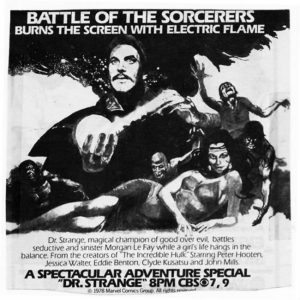
It was a big deal when Marvel Studios announced it was making a Doctor Strange movie. It was an even bigger deal when Benedict Cumberbatch was cast to play the doctor. As big of deal as these things were it wasn’t the first time Marvel brought the master of the mystic arts to the silver screen.
Long before Netflix and Marvel dominated the streaming spectrum with the Marvel TV Universe (Not to be confused with the Marvel Cinematic Universe) CBS had a certain amount of success with their own Marvel properties. Captain America, The Amazing Spider-Man, and The Hulk were all hits for the network. In 1978, CBS added Dr. Strange to their little stable of Marvel properties.
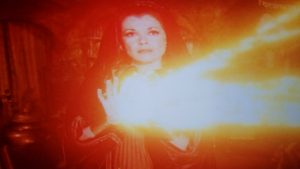
Compared to the comic book or the 2016 version, Dr. Strange (CBS went with the abbreviated version) follows its own path for Stephen Strange’s origin story. In CBS’s production, Strange is a psychiatrist and not a surgeon. So there’s really nothing happening with his hands during the movie.
Dr. Strange, like Doctor Strange, is an origin story. Doctor Strange‘s origin is more elaborate than Dr. Strange‘s abbreviated story. 1978’s Stephen Strange learns he’s a magic man after he helps Lindmer, the sorcerer supreme of earth, and his trusty sidekick Wong fight Morgan LeFay. There’s no prolonged training and learning sequences in Dr. Strange either. It seems all Strange’s magic comes from a ring his father gave him when he was a child. It’s also at this point Strange learns his parents were killed by evil forces.
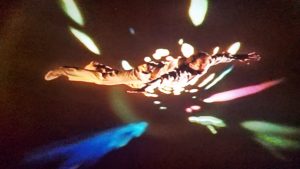
Dr. Strange is hokey and dated. Plot lines, like Clea Lake (absent from the 2016 version, but a key character in the original comic) being a key piece to Morgan LeFay’s plan to kill Lindmer, dissolve never to be discussed again. The special FX consist of animated lights, a puppet surrounded by smoke, and actors bathed in different color lights.
It’s a short movie, but it’s also fun if you don’t judge it by 21st Century eyes. Peter Hooten plays Strange a little more suave than Cumberbatch. The acting is bad at times and other times the actors over act. There’s also very few attempts at humor. However, Dr. Strange still has a certain amount of charm and is a lot of fun if you don’t take it serious. At all.
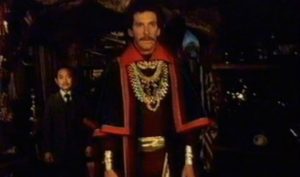
Like a lot of superhero movies, Dr. Strange leaves us with a cliffhanger. LeFay, who we thought was going to be banished to the realm of red lights, turns up on a talk show hawking her new self help book. Strange, after helping a street perfomring magician pull a rabbit our of thing air, walks into the credits assuring us he’s going to be protecting earth for years to come. Unfortunately, the world never got to see any more of Hooten or Strange.
If you like the Dr. Strange character you’ll like both interpretations. However, die hard Marvel fans will only be happy with the slicker 2o16 version.

